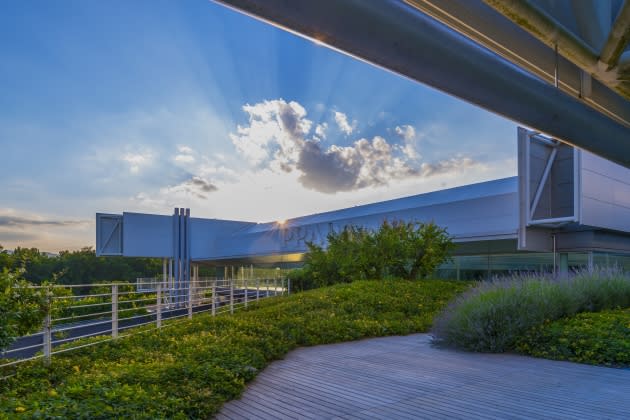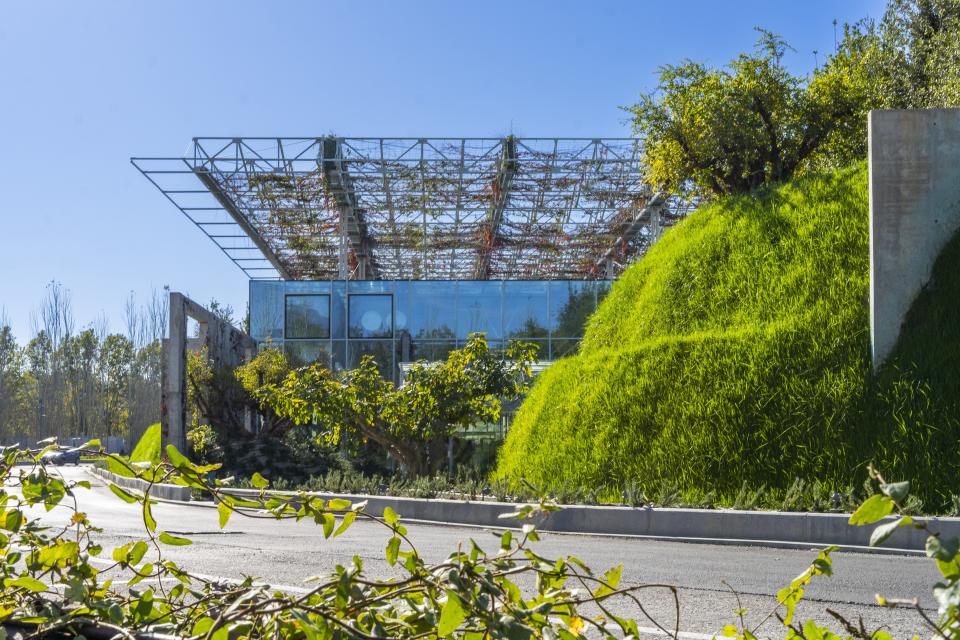Prada Group Ups Investments in Industrial Strategy, Sustainability

VALVIGNA, Italy — A vertical industrial structure is almost par for the course today in the luxury industry, but Patrizio Bertelli, executive director of the Prada Group, on Thursday made a point of letting reporters gathered at the company’s plant in Valvigna, Tuscany, know that he is not jumping on the bandwagon — on the contrary.
In his usual feisty manner, Bertelli said that back in the ‘90s when he started building the network of plants that has grown in time to comprise 24 industrial facilities, of which 21 are in Italy, he was challenged by popular opinion. He recalled that he was told then that his strategy “did not make sense, and people wondered why I would not simply turn to the existing manufacturers. Today, I see you are here and the press is interested in our factories. Why did you change your mind?” he demanded.
More from WWD
Bertelli blamed “a general lack of respect for the factory” back then, which he viewed as an obsolete “attitude from the 19th century on the exploitation of work.” He trumpeted his decisions from long ago, “which have impacted the life of people,” investing in structures “where people are happy to work.”
The first artisan that he employed, Lisetta Mazzoni, is now 75 and still works for Prada, he said proudly, and “she has no intention to retire.” That was a fact that later that day she firmly reiterated to the press.
“The factory represents 50 percent of the life of people and you know that your strategic decisions as an entrepreneur will impact the life of people,” Bertelli continued. “We have made the factories a comfortable place. The factory is a family. It sounds banal, but we’ve seen births, divorces, lives spent together that at times are complex, and journalists never spoke well of factories, also because they were identified with the entrepreneur, while often the factory is even better than the entrepreneur.”
He prided himself on creating the group’s own pipeline, from product to retail, a model that “the French interpreted and followed. It’s an enormous commitment, but it’s an asset which I think of in a long-term frame, 20, 50 years, not five.”
As an entrepreneur, the challenge is “to understand the expectations of a young worker today, who is entirely different from a young person in the ‘90s. People must feel integrated and part of the factory’s daily life, given more responsibilities.”
He pointed to his son Lorenzo, head of corporate social responsibility, who is expected to take the lead in the future, and said that he “will have to deal with changes in Africa and India, new technologies, robotics, everything that is manual, but the real challenge will be to integrate cultural changes of young people.“
His son admitted “the only pressure when I wake up is to guarantee the salary” of the group’s employees, now totaling 13,768. “The rest does not count.”
The company has grown to reach sales of 4.2 billion euros last year, with a presence in 70 countries and 612 directly operated stores. While his father and mother Miuccia Prada have always “been passionate about their job, they did what they liked and had fun, and the result of having fun was growth, but they also feel the responsibility of paying the salaries. If we follow with the same approach, listening to people and being curious, results will continue to be positive. I think that the values of our company are aligned with the evolutions of society today. I connect the dots and hopefully will give even better visibility to what they have done.”
Lorenzo Bertelli, together with industrial director Massimo Vian, headlined the event of the day, focusing on industrial strategy and sustainability through tours of the Valvigna plant, a one-hour drive from Florence, and the nearby Levanella logistic hub. “Our motto is to be drivers of change and this is founded on three pillars: the planet, people and culture,” he said.
Vian praised the beauty of the Valvigna factory, which is full of natural light, surrounded by gardens and plants, which leads to “happy workers, and the excellence of products.” The facility, which was completed in 2018, spans over four buildings and 356,400 square feet and employs 770 individuals. Vian said 100 percent of Prada and Miu Miu samples are made in-house. There is also an archive with 45,000 references.
Vian said that, from 2019 to the end of 2022, investments totaled around 140 million euros, of which 120 million euros were in capital expenditures, and 22 million euros in acquisitions. Asked about potential targets, Lorenzo Bertelli said, “we are scouting for new opportunities in 2023,” but demurred from providing details. Vian said the group is “very well positioned” in the leather goods segment, which will likely not be considered for future M&A activity.
In 2022 almost 70 million euros was invested in vertical integration, technology, industrial processes, plants expansion and efficiency improvements.
Almost 60 million euros are planned in capex investments in 2023.
Propelled by strong growth of its Prada and Miu Miu brands across all product categories, the group is on an upward trajectory. As reported, the company’s full-year results beat analysts’ expectations and achieved margin targets ahead of schedule. In 2022, net profit soared 58 percent to 465 million euros on the back of a 25 percent gain in revenues to 4.2 billion euros.
By the end of 2023, Prada will double the size of its knitwear factory in Torgiano, in Umbria, a long time knitwear manufacturing hub. It is also planning to have a fully automated shoe production line inside its Levane plant near Arezzo in Tuscany.
Next year, the group is eyeing setting up a new leather goods plant near Siena.
In line with its sustainability initiatives, in August Prada will work on a new waste water treatment plant at its Tannerie Limoges site.
The Levanella hub was completed in December, designed by Guido Canali, who also conceived the ValvIgna plant, and it’s equally immersed in greenery. A walk-through of the site is impressive, comprising eight buildings, and where almost 226 people work. Inventories at the end of March totaled around 500,000 pieces. At the end of December, inbound traffic amounted to around 3.2 million pieces and outbound to 4.5 million units.

The group will be hiring more than 400 people by the end of the year to strengthen its production capacity and craftsmanship expertise in Italy.
The investment will help achieve greater agility and a reduction in time-to-market. The group already carries out all quality checks on raw materials and finished products, and manages all logistics internally.
A considerable proportion of the new positions will be filled by students of the Prada Group Academy, where new entrants will learn manual and craft skills.
The academy, which was founded in the early 2000s, “will become increasingly crucial for the future preservation of our know-how and the one of the sector,” said Vian, a former Luxottica executive who joined Prada in 2020. “We feel a responsibility to invest in young talent who will become the next generation of expert craftspeople.”
More than 200 new professionals will be trained over the next year across leather goods, footwear and ready-to-wear.
The group will also establish a new permanent branch of the Prada Group Academy at its Scandicci plant, near Florence, dedicated to leather craftsmanship. Around 30 students will be part of the first program there.
The new positions will be opened across some of Prada Group’s main manufacturing facilities in Italy, including around 100 new hires in Scandicci, representing a 50 percent increase in the current workforce.
Vian admitted it’s a commitment to train new workers, “costly but profitable in the medium-short term. We need to be attractive and we can offer highly advanced technology and guarantee opportunities to grow.”
Lorenzo Bertelli said the group will communicate a new project focused on bio-diversity soon. He also spoke about the progress made on decarbonization, the conversion of heating systems to electric power, and reaching 54 percent of green cars, among other issues. He noted that 66 percent of electricity is derived by certified renewable sources and that the procurement of raw materials represents more than 70 percent of Scope 3 GHG emissions. The group has more than doubled the number of LEED-certified stores to 181.
Thanks to gaming, there has been a substantial development in the 3D software to design ready-to-wear, where even the characteristics of the fabrics are digitalized. “This is very important in terms of sustainability because you save time and money in the use of fabrics and prototypes,” Vian said. The shoes in the women’s show last February were developed for the first time in 3D, he remarked.
Best of WWD


